2006 KAWASAKI KX250 TWO-STROKE TEST
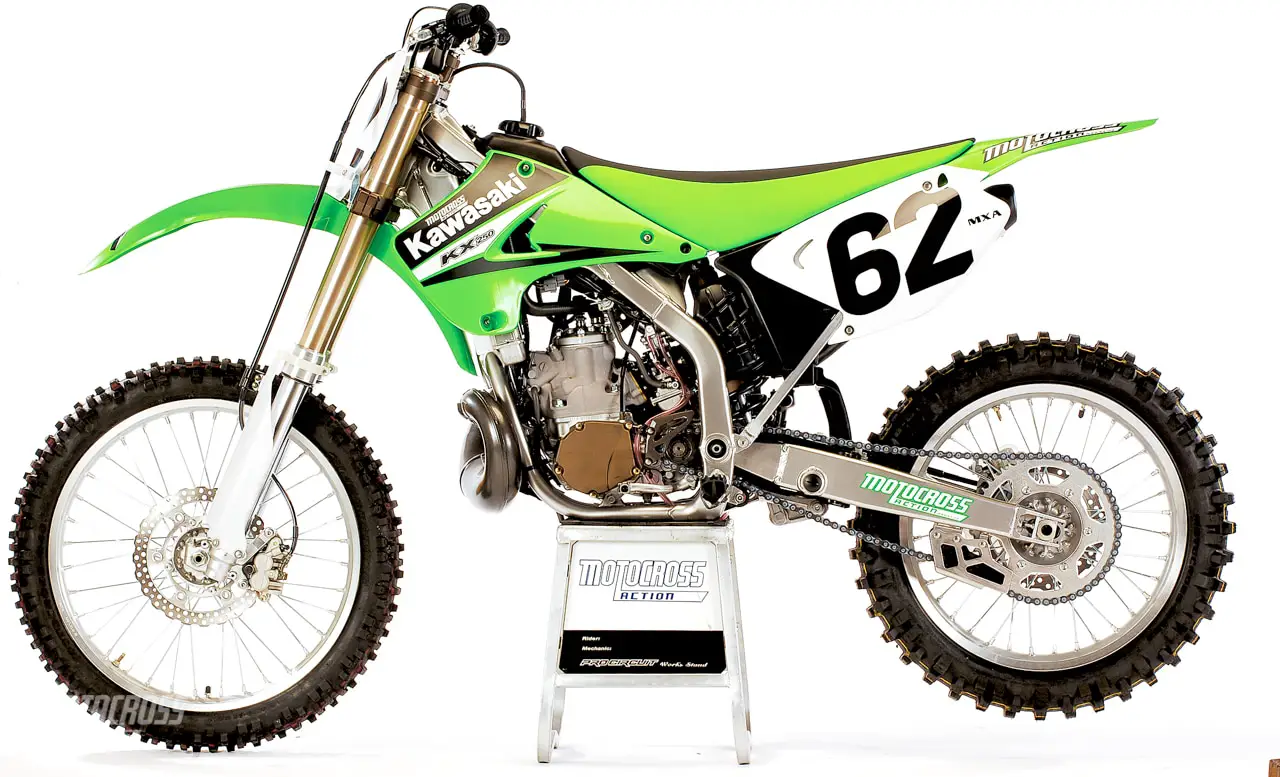 This is an archived MXA test from the November 2005 issue of Motocross Action Magazine. Get your MXA subscription today.
This is an archived MXA test from the November 2005 issue of Motocross Action Magazine. Get your MXA subscription today.
In one way you should be thankful that Kawasaki is even offering the KX250 in its 2006 lineup. The KX125 wasn’t so lucky. It got the ax. This is a trend that will become more prevalent in the coming years. Industry analysts predict that the current crop of 125cc two-strokes will shrink every year (if we were betting men, we’d lay odds that Yamaha and KTM will be the last two holdouts in the 125 class). Dropping a 250 two-stroke from the product line is a much bigger hurdle for the marketing men to jump for four reasons:
(1) Sales figures for the 250 two-stroke are much better than for 125 two-strokes–almost double.
(2) As long as high-paid factory riders prefer 250 two-strokes in Supercross, the factories will be pressed to keep them in production. It would be bad form to race a bike that you don’t sell.
(3) Yamaha sold 50 percent more YZ250s in 2005 than they did in 2004, so it is possible for a brand to reach out and grab the brass ring–something you can’t do if you don’t offer a bike.
(4) There are all kinds of consumers, and just because sales of 250 two-strokes have decreased over the years, by discontinuing a model you drive your loyal 250 buyers to your competition.
Thus, for now, the 250 two-stroke is still a vital part of the motorcycle business. The question is, how much of that market will the 2006 KX250 get?
Q: IS THE 2006 KX250 ENGINE FASTER THAN LAST YEAR?
A: No. But we aren’t going to whine about the 2006 model being a clone of the 2005 engine. Why not? Because the 2005 KX250 put previous KX250 engines to shame. It was at least three horsepower better than the 2004 engine. So, what buyers are getting for 2006 is a reprise of a really good KX engine. Our test bike made 45.7 horsepower.
Q: IS IT FAST OR SLOW?
A: It is fast.
Q: WHAT IS UNIQUE ABOUT THE KX250 POWERBAND?
A: Kawasaki has produced a very old-school powerband. It is very reminiscent of the powerhouse engines of the ‘80s. In short, it is a mid-and-up engine. Low-end power is virtually nonexistent. You can’t tool around on the KX250 at half throttle, cruise through the turns or coast in the switch backs. The KX250 is as pure a gun-and-run engine as can be.
What does “gun-and-run” mean? It means that you have to hammer the throttle hard in the midrange. Then, slam in another gear and bludgeon it again. No finesse. No throttle control. No hesitation. On or off–nothing in between.
The KX250 does not offer the rider a quarter-throttle or half-throttle solution to track situations. You go all out or you don’t go.
Q: HOW DOES IT COMPARE TO THE YZ250 AND RM250?
A: The KX250’s powerband used to be a distant cousin of the RM250 powerband, but that was last year. For 2006, the Suzuki RM250 added a healthy dose of usable low-end power to the RM250 repertoire. With the extra low-to-mid transition, the RM250 divorced itself from the gun-and-run family and moved in with Yamaha’s broad-style of power.
The YZ250 and RM250 are easier to ride than the KX250, but they aren’t necessarily faster. If a rider is willing to work for it, the KX250 can be untouchable in a straight line.
Q: WHERE DOES THE KX250 ENGINE SUFFER?
A: Without any varnish, the KX250’s brutal mid-range hit and steady pull into the top come at the expense of technical acuity. You can’t sneak around an off-camber turn on the KX250. It doesn’t have smooth power down low. It jolts when it comes on the pipe. In half-throttle situations a YZ or RM can glide through a rock-hard turn with a gentle touch. Not so with the KX250–it tries to peel the top layer of soil off with wheelspin.
We think the compression is a little too high on the KX250. This engine would benefit from having the combustion chamber volume increased and the compression ratio reduced. Yes, Virginia, that would take away some of the awesome thrust, but it would replace it with a softer touch in tricky conditions.
Q: WHAT ABOUT THE KX250 JETTING?
A: It was a good thing that we started testing the 2006 KX250 in the heat of summer. If it had been winter, with more oxygen in the cooler air, the KX would have pinged itself to death. The jetting is lean, even for normally rich 100-degree weather. We replaced the 160 main with a bigger 162–and could have gone richer.
Q: WHAT ABOUT THE KX250 GEARING?
A: We didn’t like the stock KX250 gearing. No big surprise. We have had major issues with the large gap between second and third gear on the Kawasaki gearbox for years. With the stock gearing, the KX250 can fall on its face with every upshift unless you have it pegged. We added one tooth to the rear sprocket (from 51 to 52) to lessen the gulf between second and third.
Q: HOW WELL DOES THE KX250 SHIFT?
A: Mediocre. The clutch was very draggy, and the shift lever was awkwardly positioned. Now we know why Team Kawasaki riders swap the cast aluminum shifter for a steel shifter–so it can be bent outward to make it more accessible. The shifting would be better if we could find the shift lever. Every MXA test rider complained that the KX’s shift lever was tucked in so far that it felt short.
Q: WHAT ABOUT THE 2006 KX250 SHOWABA FORKS?
A: Kawasaki stuck with last year’s Showaba forks for 2006. Showaba is not the brand name. It is a blending of Showa and Kayaba technology, and the term is used to describe Kayaba’s totally sealed cartridge forks (Kayaba’s take on Showa’s Twin-Chamber design). Although there are differences between Kayaba and Showa forks, the similarities in this version were too great to ignore.
The KX250’s forks are decent, but they have a tendency to drop down into their stroke a little too far and then ramp up at the end of the travel. This makes the KX250 forks work harder than they should. The shock doesn’t help matters much, because its strange setup transfers considerable load forward.
We set the fork’s compression on 12 out and the rebound on 10 out, but most importantly slid the forks down in the clamps to raise the front end (to compensate for the tall rear end).
Q: WHAT ABOUT THE 2006 KX250 SHOCK?
A: Before we talk about the shock, we need to discuss KX250 handling. Not a single MXA test rider liked the way the KX250 handled. It castered on the entrance to turns, tended to kick in braking bumps, over-steered at turn-in and understeered from the center-out. Why? The KX250 sits too high in the rear (we think it is higher than Kawasaki’s test engineers planned). The result of the stinkbug rear end is that the head angle is steeper than optimal (and steeper than the offset of the triple clamps can handle). There is no bite from the front tire on the entrance of turns.
The quickest fix for the rear suspension, which helps with the handling, is to install a Pro Circuit KX250 shock linkage. The Pro Circuit linkage drops the rear of the KX250 enough to kick the head angle out approximately one degree, which in turn feeds some trail back into the front geometry. The $185 link also changes the leverage ratio to hold the KX250 shock higher in its stroke longer. Conversely, by stiffening the rising rate, the KX250’s rear suspension feels softer. In action, it feels about one spring rate softer (which is a good thing). The 2005 KX250 turns better with the Pro Circuit linkage installed.
We set the race sag at 105mm and the low-speed clicker on 12 out. High-speed compression adjustment makes a return to the 2006 KX250–it was dropped last year. We set it on 1-3/4 turns out. Rebound varied from eight to ten clicks out.
Q: HOW DOES THE 2006 KX250 HANDLE?
A: The most evident handling characteristic of the 2006 KX250 is exhibited at turn-in (when the front wheel is first turned). Turn-in results in a freewheeling castering effect. There is no bite. After a brief sensation of oversteer, the KX rider has to release pressure on the front wheel to get the front end to grip because it starts to understeer severely. As a rule, the KX has a tendency to stand up in any corner that doesn’t have a berm. This makes it perfect for sliding around the inside line and less than perfect on fast flat turns.
In our opinion, this is a flawed chassis. The stinkbug rear end hampers not only the rear suspension, but the handling as well.
Q: WHAT DID WE HATE?
A: The hate list:
(1) Shift lever: It feels short and delivers almost no feedback. The problem? It is positioned too far inboard.
(2) Gearbox: Out of the box, the gearing is too tall (which is aggravated by the gap between second and third gear).
(3) Clutch: Grabby and vague.
(4) Tires: Kawasaki’s castering front wheel needs all the help it can get–and that doesn’t come in the form of Bridgestone tires. Drop the Bridgestones for the best front tire you can get. For intermediate dirt, we’d opt for a Dunlop 756 Race Replica.
(5) Handling: The frame geometry feels like the product of a committee that never met.
Q: WHAT DID WE LIKE?
A: The like list:
(1) Power: You gotta love this engine. It’s a Top Fuel dragster of an engine. On a fast straight, steep hill or in deep loam, it burns rubber.
(2) Handlebars: Renthals.
(3) Brake rotors: Borrowing a page from KTM, the brake rotors on the 2006 KX250 have been cauliflowered to help distribute heat more evenly and to make them self-cleaning.
(4) New stuff: The list isn’t long, but for 2006 Kawasaki changed the piston profile, water pump impeller, high-speed compression adjuster, brake rotors, handlebars and silencer.
Q: WHAT DO WE REALLY THINK?
A: In truth, the Kawasaki KX125 was a much better overall package than the KX250–and it got dropped from the 2006 Kawasaki lineup. Que sera sera.


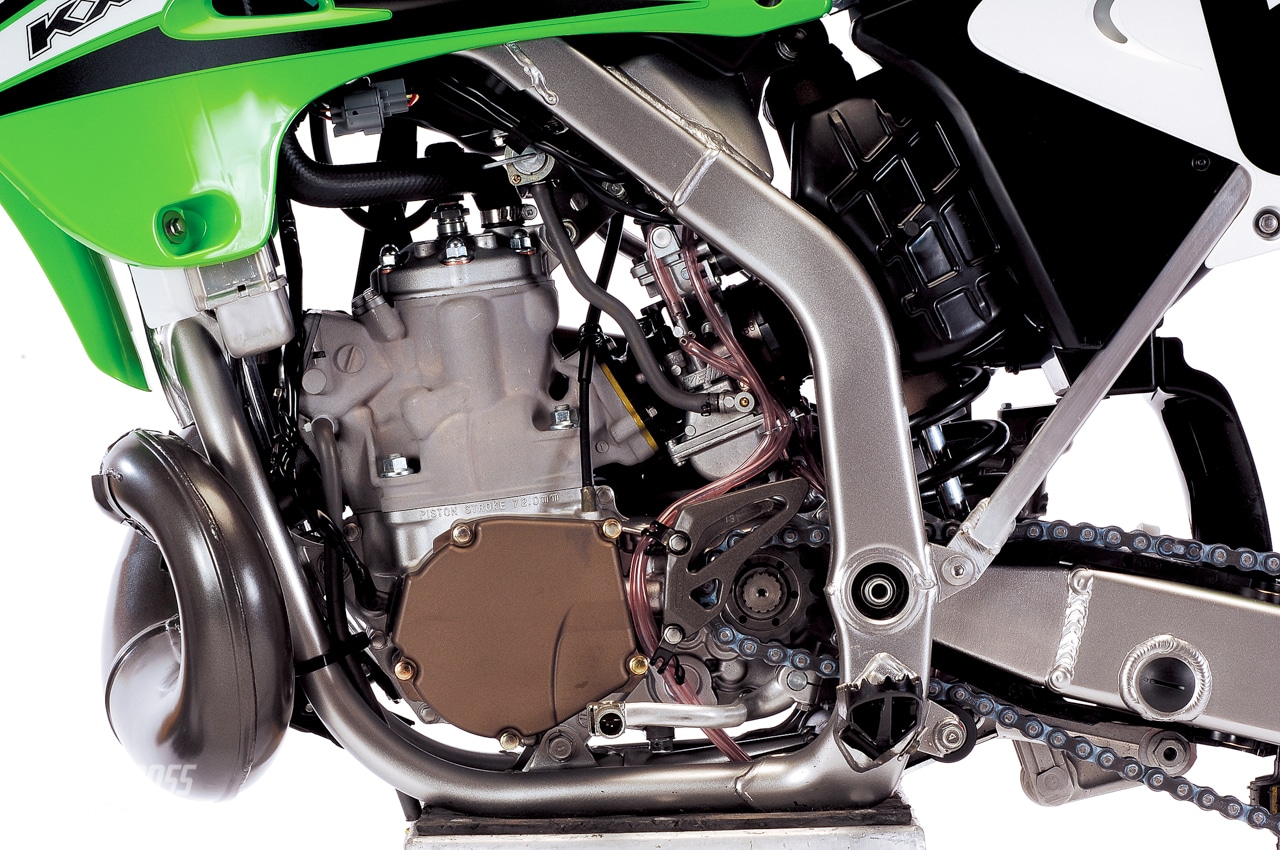
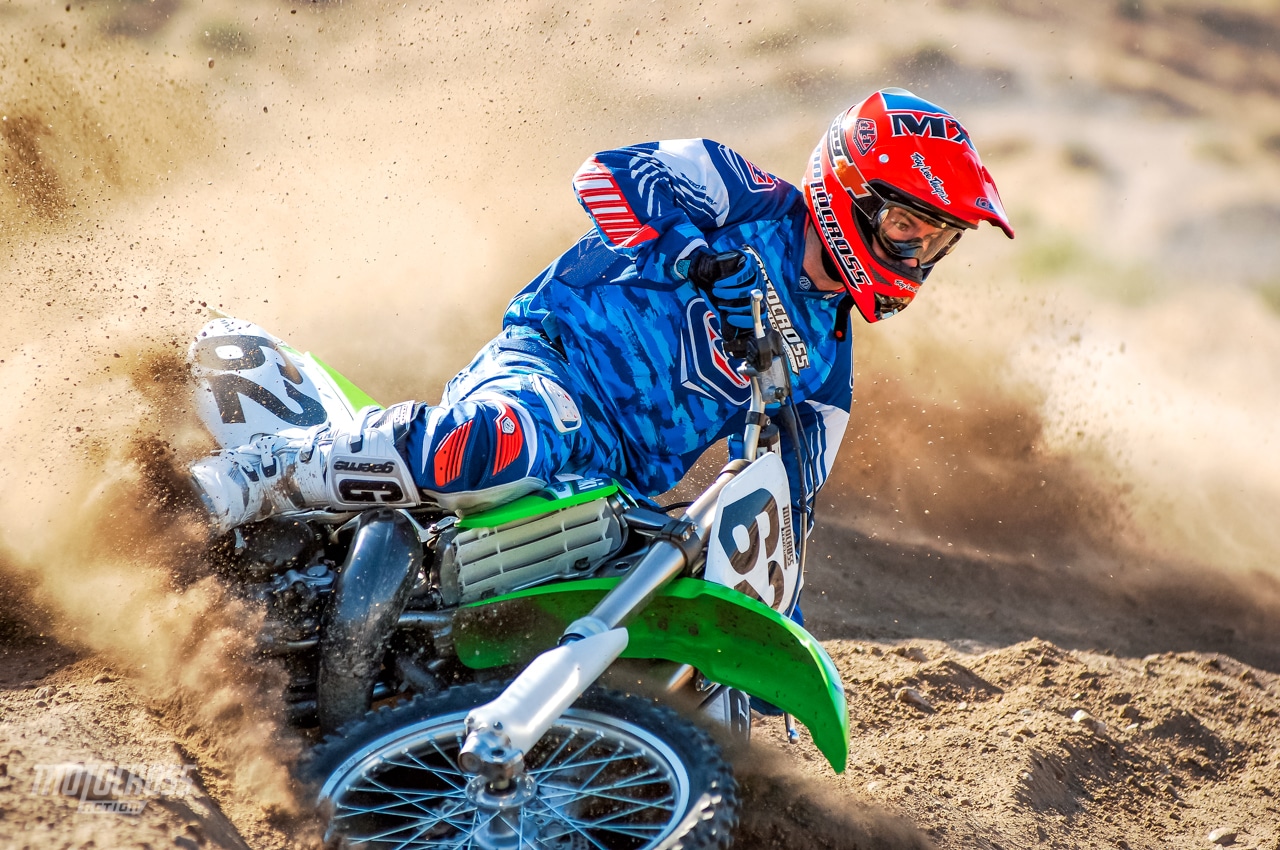

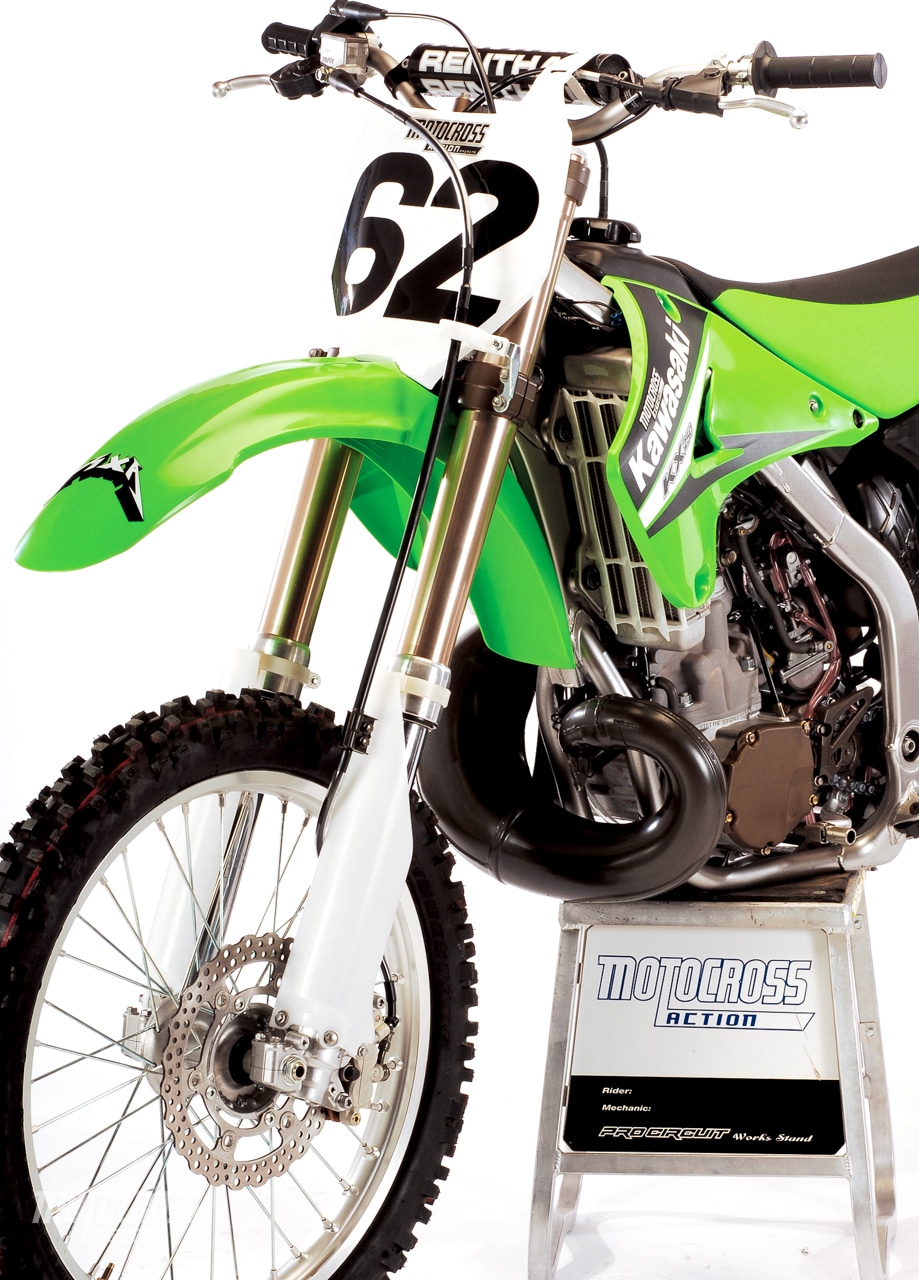
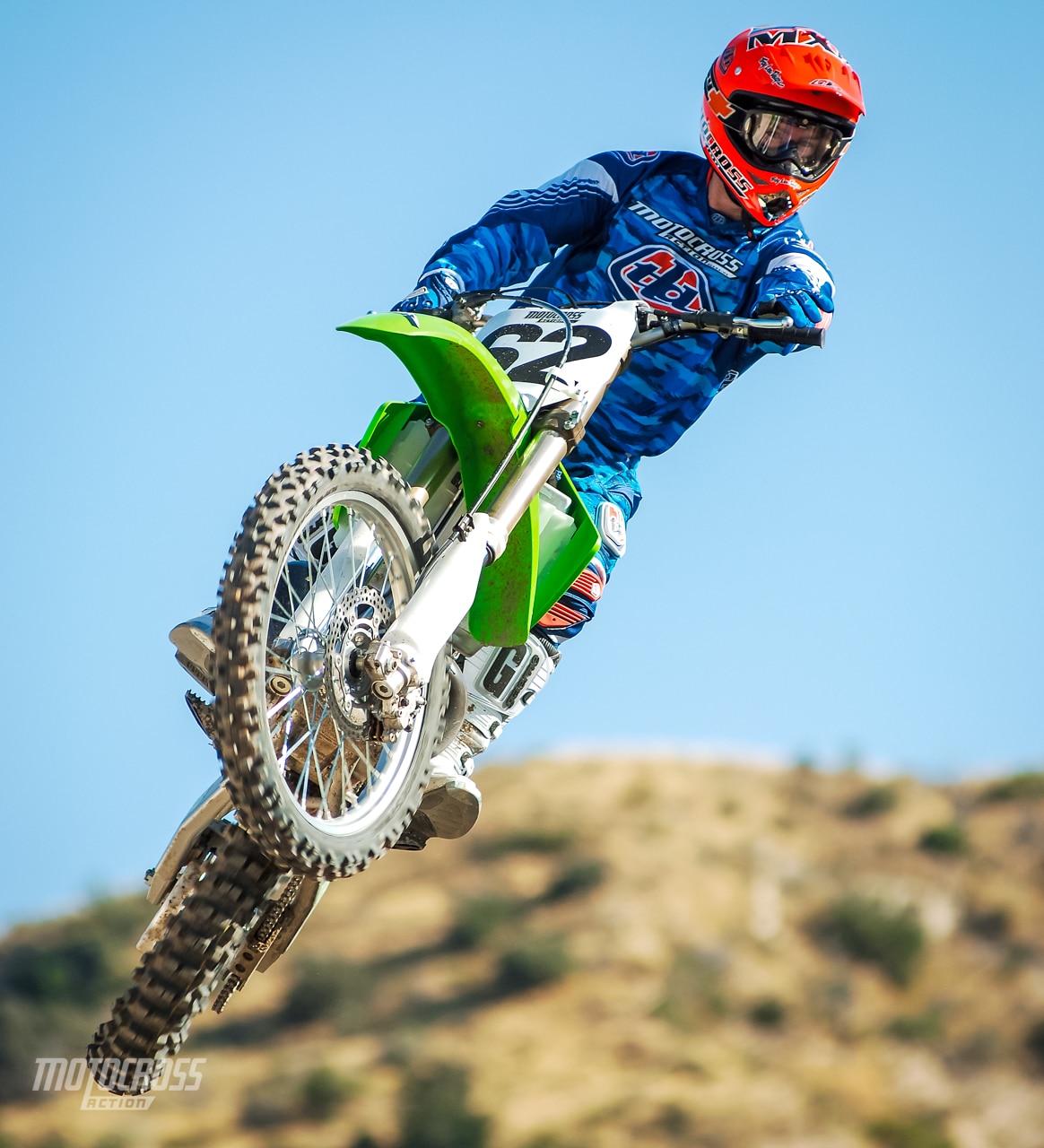
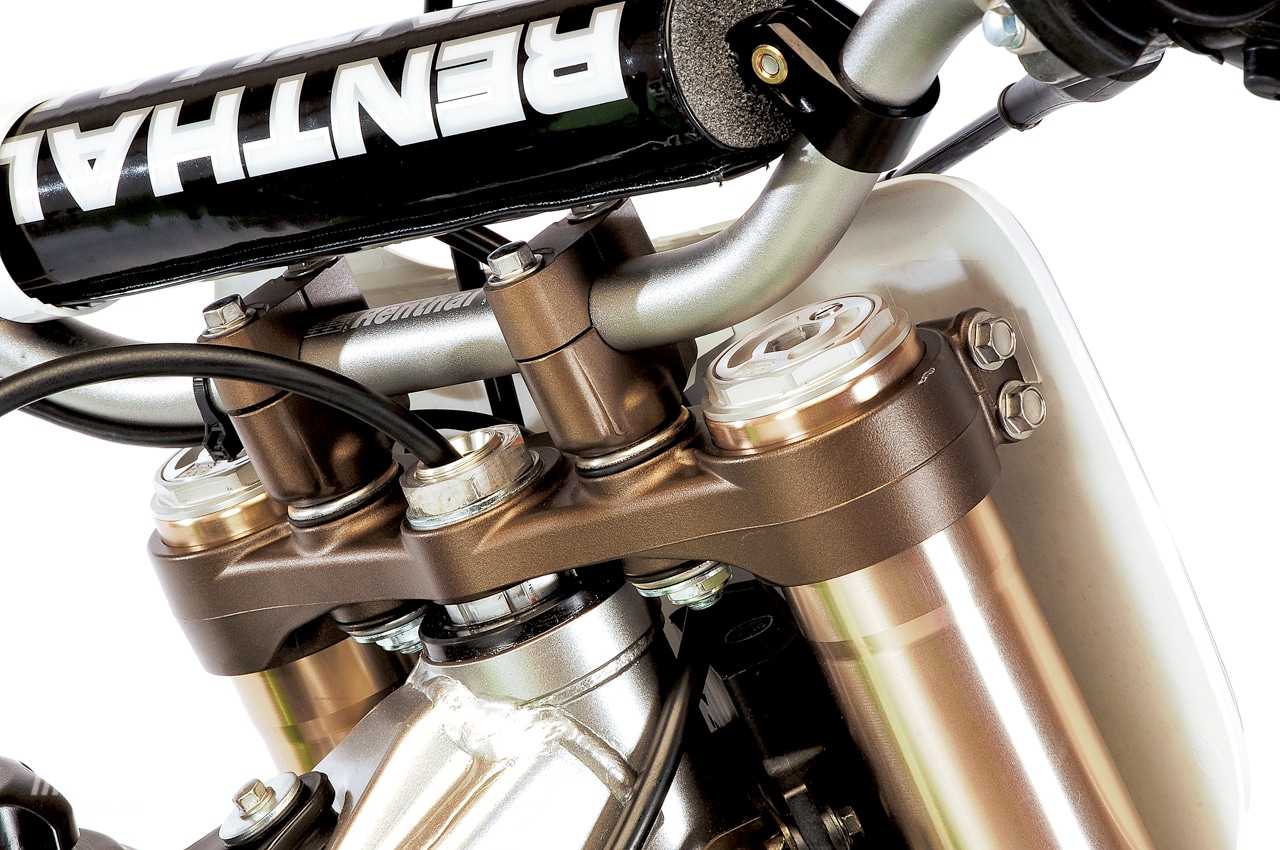




Comments are closed.